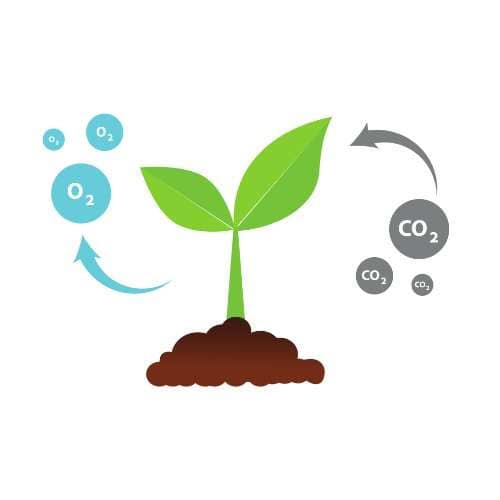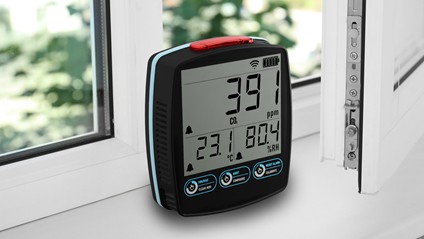As a teacher you probably recognize it, especially on hot days; students complaining of headaches, they are less alert and do not absorb the material well. But these complaints can also occur in other public spaces where many people are present. The cause could well be an excessive level/presence of carbon dioxide/CO₂. Frequent in the news a few weeks ago, now you don’t hear much about it. But what is it really, why does it bother us and how can we protect ourselves from it? That’s what we try to explain in this article.
What is carbon dioxide / CO₂ ?

Carbon dioxide is a gas that is always present in any room. It is odorless, colorless and invisible. It is released when fuels containing carbon burn completely. Vegetables and meat also contain carbon. These food sources are the gasoline for our bodies and is burned in everything we do. We then breathe out this carbon dioxide. Every time we breathe, we add CO₂ to the space we are in.
How is carbon dioxide/CO₂ broken down?
 Trees and plants need CO₂ to grow.
These take carbon dioxide from the air and convert it into oxygen and carbon.
The oxygen is reemitted by the plants and flowers.
Trees and plants need CO₂ to grow.
These take carbon dioxide from the air and convert it into oxygen and carbon.
The oxygen is reemitted by the plants and flowers.
Oceans also extract CO₂ from the air. It is absorbed in the upper layers of the ocean. Then it sinks to the bottom where krill, plankton and seaweed convert it, like trees and plants, into oxygen and carbon. However, years go into this process.

Is carbon dioxide/CO₂ dangerous?
A normal ambient air contains about 0.041% CO₂. When the air you breathe contains more than 1% CO₂, you can already start to feel a little drowsy. At 2%, your blood pressure rises, you start to feel stuffy and headaches will occur. At more than 10%, CO₂ is fatal.
Schools and other public spaces
We mentioned earlier in this article that we also emit CO₂. CO₂ meters will be mandatory in schools starting in 2023, and when you consider how many people are in a relatively small space, it makes sense. In an elementary school, there are an average of 23 to 24 students in a class. With that, there is a teacher continuously present and if you are lucky, there is also a teaching assistant. That’s an average of 26 people within 1 room. Classrooms are on average 50-56m2 .
If you are in a small room with many people and there is not enough ventilation, CO₂ levels can quickly reach 1 or 2%, which will cause you physical discomfort. But CO₂ is not visible, so how do we know when CO₂ levels are too high?
CO₂ meter

To know how much CO₂ is in the air, you can purchase a CO₂ meter. There are several models on the market, ranging from a simple print card with a screen to sophisticated devices that also measure temperature and humidity. When the maximum concentration of CO₂ is exceeded, an alarm is always issued.
What to do in the event of an alarm?

When one of the alarm values is exceeded, it means that there is too much CO₂ in the room and ventilation is needed.
It is often enough to open a few small windows.
Is this not helping?
Then it is wise to also open larger windows/doors for sufficient fresh air.
After an alarm, take the device outside for a moment to allow it to recalibrate, then hang it back in the appropriate place in the room to be monitored.
The CO₂ level should return to the correct level after ventilation.
If this is not the case, something else may be going on and the situation should be looked at by a specialist.
Wireless CO₂ and air quality meter from Praxas
Praxas’ CO₂ air and quality meter measures CO₂, humidity and temperature. Alarm values can be set for each parameter and when they are exceeded, the device sends an e-mail and/or text message. The device is self-calibrating and complies with the indoor and outdoor environment guidelines for elementary school(RIVM/2016), School Building Decree (2012) and SUVIS regulation.

